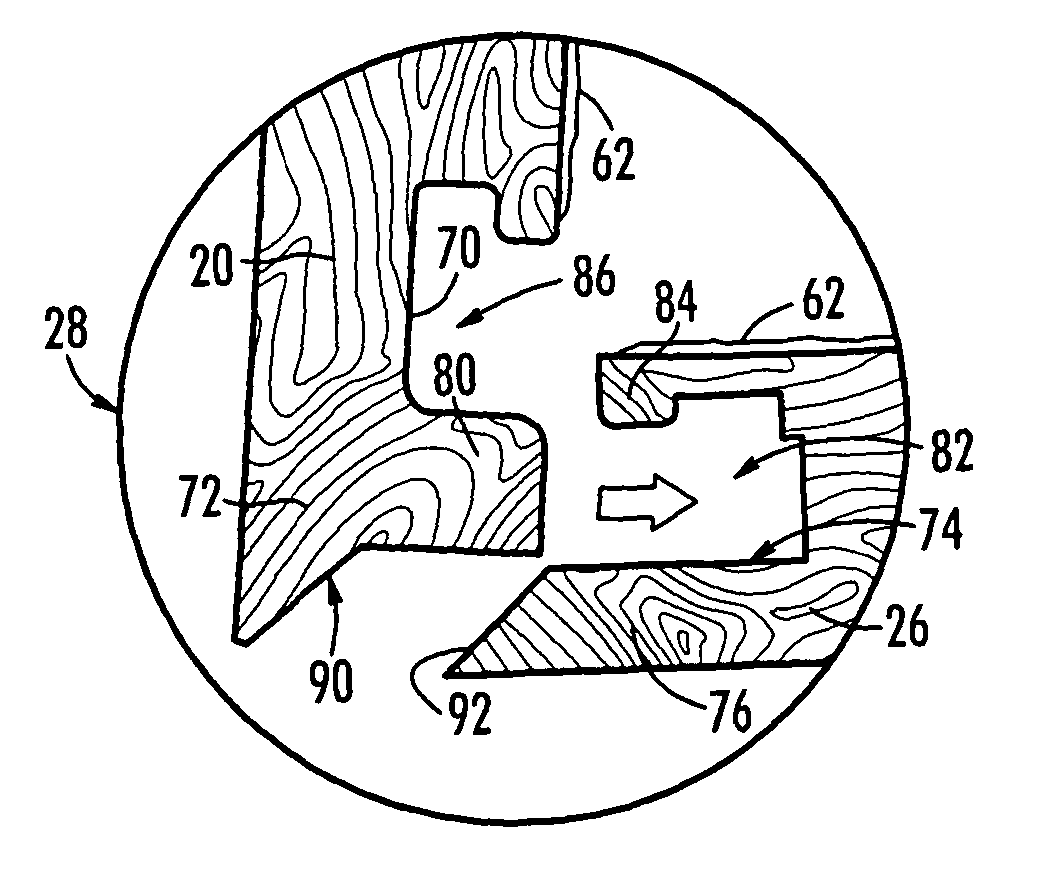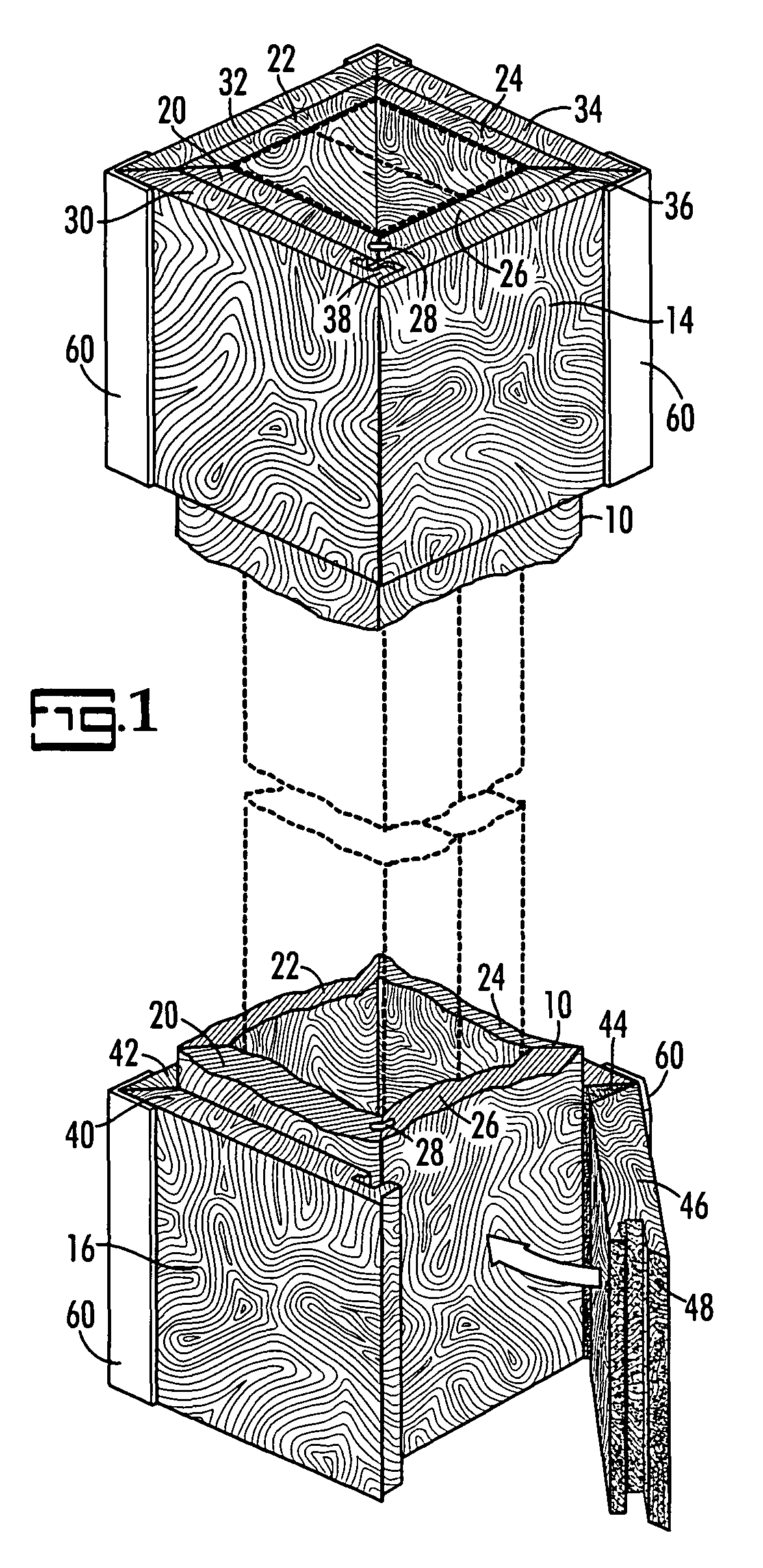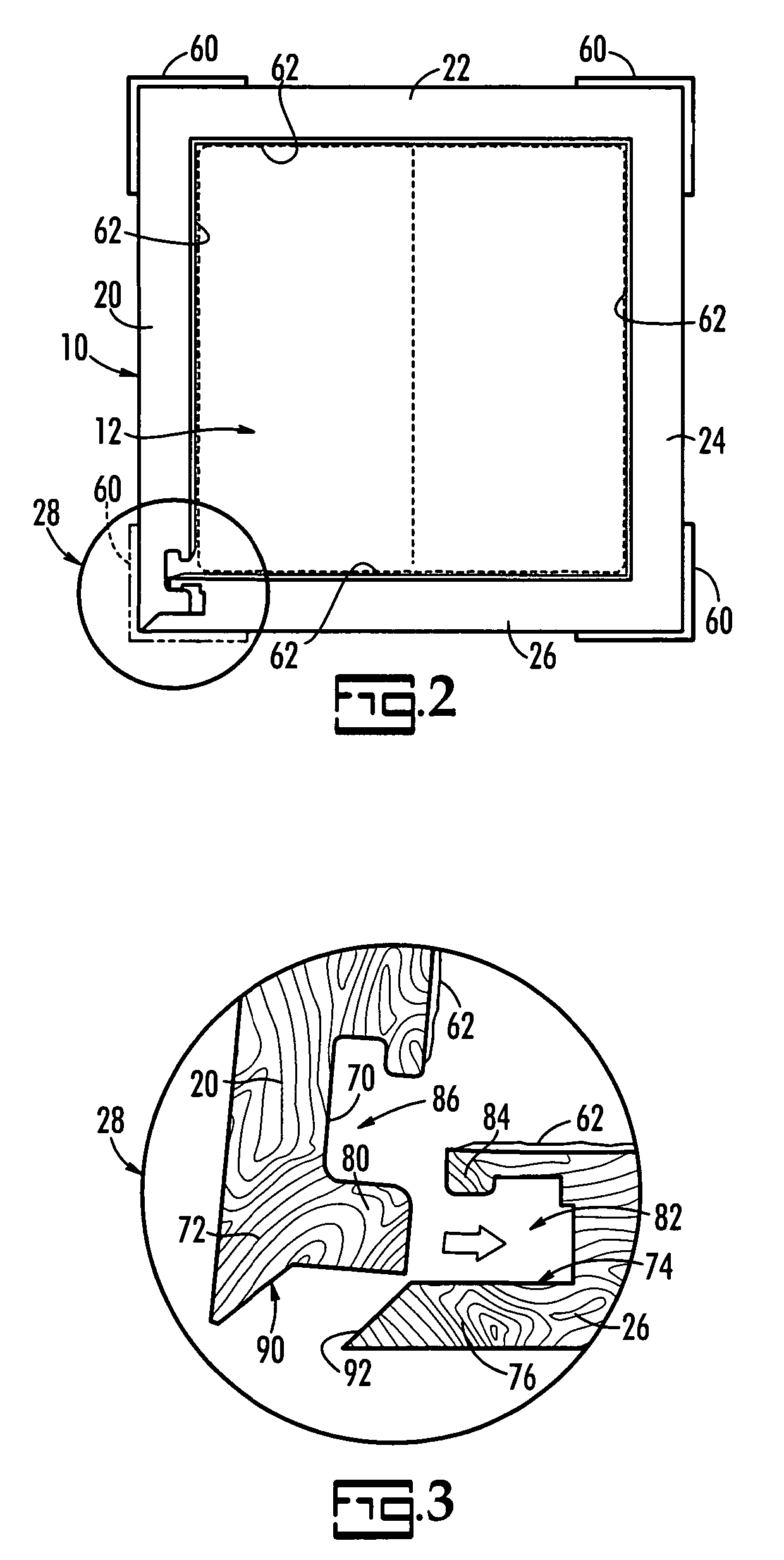Enclosure and method for making an enclosure
a technology for enclosures and enclosures, applied in the direction of furniture parts, mechanical equipment, transportation and packaging, etc., can solve the problems of difficult finding qualified craftsmen, heavy impact on construction costs, and difficulty in finding qualified craftsmen, etc., to achieve easy work, easy to work, and precise and quick formation
- Summary
- Abstract
- Description
- Claims
- Application Information
AI Technical Summary
Benefits of technology
Problems solved by technology
Method used
Image
Examples
Embodiment Construction
[0020]The present invention is a method for making an enclosure for residential or commercial construction such as columns or in furniture manufacturing, such as frames for a drawers. The enclosure is formed to make a closed shape, except on the ends. Other types of enclosures are contemplated by the present invention, such as ceiling beams, cabinetry and end tables where a closed framework is made having plural sides and is then topped with a suitable surface.
[0021]Referring now to FIGS. 1-5, the present enclosure will be illustrated as a column wrap, generally indicated by reference number 10 in the figures. In particular, in FIG. 1, there is a support post 12 made of two pieces of lumber fastened together to form a single, load-bearing member for supporting a porch roof or deck or balcony (not shown). Column wrap 10 is wrapped around support post 12 to trim it, that is, to give it a clean, finished appearance and protection from the elements. To add architectural detail, molding ...
PUM
 Login to View More
Login to View More Abstract
Description
Claims
Application Information
 Login to View More
Login to View More - R&D
- Intellectual Property
- Life Sciences
- Materials
- Tech Scout
- Unparalleled Data Quality
- Higher Quality Content
- 60% Fewer Hallucinations
Browse by: Latest US Patents, China's latest patents, Technical Efficacy Thesaurus, Application Domain, Technology Topic, Popular Technical Reports.
© 2025 PatSnap. All rights reserved.Legal|Privacy policy|Modern Slavery Act Transparency Statement|Sitemap|About US| Contact US: help@patsnap.com



